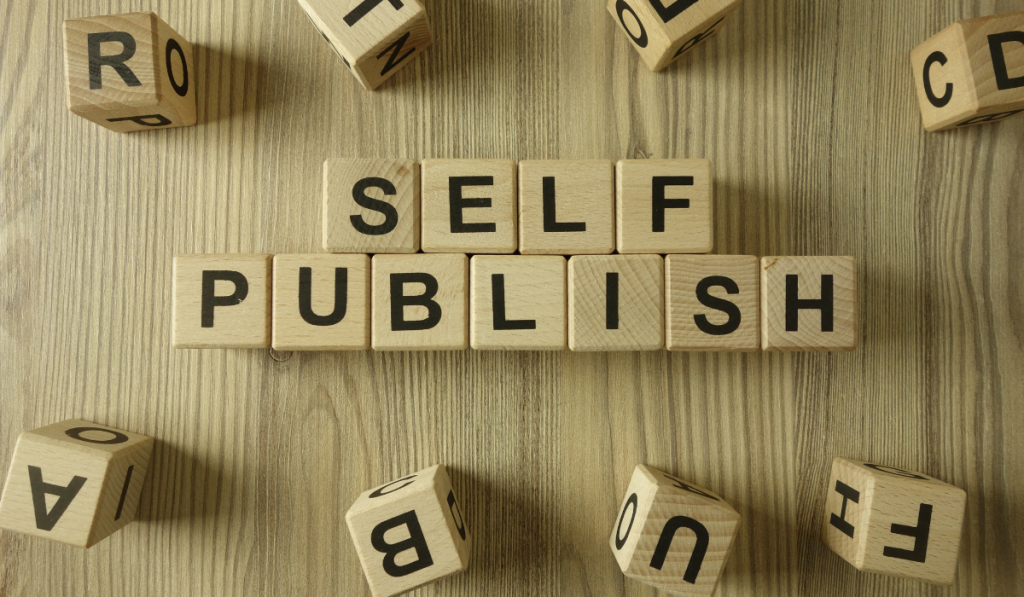
Every author aspires to make the first $100 from their books. It’s a milestone to celebrate as any progress is good progress. However, once you reach your first $1,000 as an author, you’ll start to see more possibilities.
All of a sudden, self publishing will appear as a viable path to a full-time income. You’ll start setting further out milestones such as your first $1,500 and your first $2,000. Each milestone you pass will fuel you towards significant earnings in the future.
But it all starts with the first $1,000 in earnings. That’s when we cross the bridge from hobbyist to a potential full-time author.
The authors I interviewed on The Wealthy Author Summit each surpassed $1,000 in book royalties. Some of these same authors make $1,000 every week from their books. You can get lifetime access to the Wealthy Author Summit here.
Identify Your Monetization Path
Almost no full-time author exclusively relies on their book royalties for income. An author’s monetization path features multiple assets combining together. The book is a pathway to begin the conversation and enable the reader to explore those assets.
Books aren’t sales letters. No one reading dozens of pages explaining why you should buy something else. Books built trust, and by occasionally incorporating offer(s), you can substantially increase your average revenue per reader.
The end of a book presents the best opportunity to promote multiple products and services. Authors often use the final pages in their books to promote a book series, service connected to the book, training course, merchandise, and affiliate offers. These monetization paths require more creativity if you are a fiction author. A podcast can be a great choice for fiction and nonfiction authors alike.
Consider your available assets and what assets you’ll have by the time you publish your book. Some Podcast Domination readers end up becoming clients. Readers will recognize your expertise as they read your content and prefer you to guide them along the process rather than take the DIY approach.
Publish Multiple Books
If you want to make $1,000 from a single book, that book must generate $1,000 in royalties and backend deals. That sounds simple enough.
However, if you want to make $1,000 from two books, those books must average $500 in royalties and backend deals. A second book cuts the averages by half. Many full-time self published authors reached that status with dozens of books under their belts. Some authors rely on easy-to-create journals and workbooks while others publish traditional content focused books.
Either way, the self published authors with many books to their name end up reaching the $1,000 milestone sooner. Some of these same authors end up making more than $1,000/mo from the book royalties alone.
Writing books doesn’t guarantee you’ll make money. Publisher Rocket helps you conduct research so you can discover profitable book topics and keywords in your niche. Some of your books will earn more than others, but prior research gives each new title a better chance to outperform your catalog.
Most authors with dozens of books get carried by 1-5 books. A small percentage of their books make up a large percentage of their income.
Writing routines will make or break your ability to produce several books. Write content at your peak hours and set reminders throughout the day with motivational messages to stay on track.
Grow Your Email List
Social media helps a little bit with book sales. So does running ads (we’ll talk about those later). Amongst the different strategies to generate sales, nothing works as well as your email list.
Some authors use the first page of their book to promote a free opt-in. This free opt-in ranges from a bonus guidebook to a free chapter of another book you wrote. Fiction and nonfiction authors can both incorporate this strategy to grow their email lists.
Writing multiple books puts your 1-page call-to-action in front of more potential readers. The upside to promoting your opt-in on the first page of your book is that previewers can join your email list even if they don’t buy your book.
Some authors go as far as offering the entire audio version of their books for free if you join their list. Considering the costs of acquiring an email subscriber through Facebook or Google Ads, some authors will forgo the royalty in exchange for a new email subscriber. I personally do not follow this approach, but it works for some authors.
You can use social media to grow your email list and create content to build your brand. Both measures will grow your email list, but all strategies pale in comparison to collaborations. Co-authoring a book, cross promoting existing books with other authors, and running events (i.e., virtual summits, book giveaways, etc.) will accelerate your email list growth in a way the other strategies can’t.
Growing your email list (and engaging with your subscribers) is the most important step of reaching $1,000 from your books and making sustainable income from your work.
Get Initial Reviews
Social proof impacts every stage of the customer journey. A potential reader may turn away from your book if it has bad reviews or not enough reviews in general. Getting initial reviews for your books is a critical part of demonstrating robust social proof.
Getting reviews boils down to asking enough people. You can reach out to some friends and encourage them to leave reviews. You can refine this starting point by checking who reviews your competitors’ books. Reach out to those reviewers and offer a free copy of your book in exchange for an honest review.
It’s important to ask specifically for an honest review. Asking for a 5-star review or a positive rating is sketchy and not allowed by Amazon. If you deviate from Amazon’s rules and a reviewer calls you out on it, you could find yourself in trouble. I’m not sure what ‘trouble’ looks like, but it’s best to avoid it. Asking for an honest review rather than a positive review will put you in good standings with Amazon and the reviewer.
Run Amazon Ads
Amazon Ads allow you to scale your book’s success. You can reach 100,000s of potential readers on a relatively low ad spend. Granted, some of those potential readers will scroll past your book and not click, but some of those potential readers will click on your ad and learn more about your book.
Your Amazon Ads will perform better if you first get initial reviews for your book. Many Amazon Ad experts recommend getting at least 10 reviews for your book before investing in advertising. You can use authors’ names and books as keywords in your ads. This strategy will help your books appear when someone searches for another author’s name or book. Publisher Rocket makes it easy to find these keywords, but you can create Amazon Ads yourself as well.
One of the Wealthy Author Summit speakers discussed how he uses Amazon Ads to generate thousands of dollars from his books each week. He’s truly mastered the system and gave us the full break down during our session. You can get a lifetime All-Access Pass to the Wealthy Author Summit here.
In Conclusion
Reaching your first $1,000 in book earnings is a big milestone. When you cross this milestone, you’ll see it’s possible to make a full-time income as an author. Then, it’s a matter of refining your process, writing more content, and marketing your way to success.

